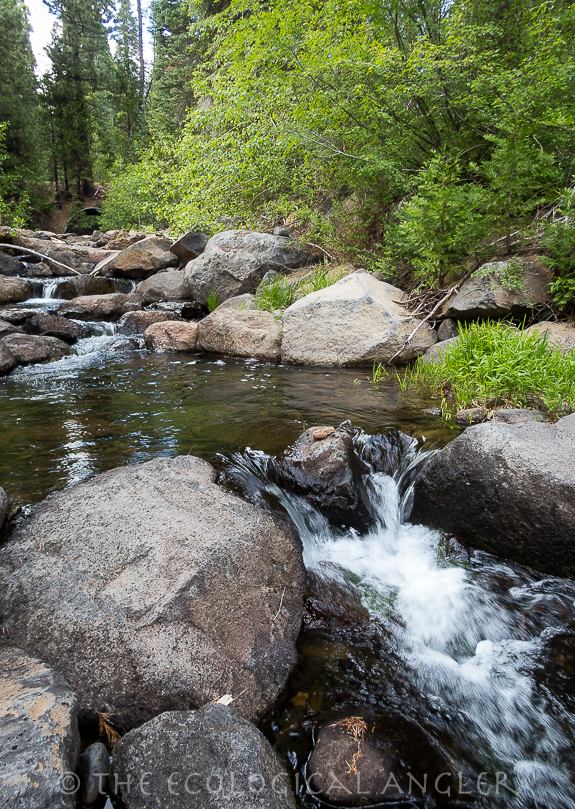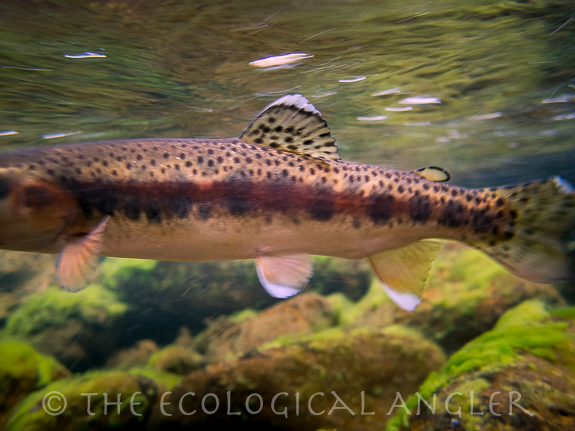The Ecological Angler
ecoangler.com
Fly Fishing McCloud River Redband Trout Stream

Livingston Stone initiated the first national salmon hatchery on the McCloud River. He also has a trout named after him - stonei. But Livingston's legacy goes beyond a hatchery and a scientific name for a fish. The following passages come from Robert Behnke's column which ran in Trout magazine where he documents the history of Livingston Stone and a unique native trout, the McCloud River Redband.

The story begins in 1872 when the newly created U.S. Fish Commission sent the eminent fish culturist Livingston Stone to California to initate the propagation of Pacific salmon. Stone chose a site near the mouth of the McCloud River because a large run of Chinook or king salmon ran up the McCloud. The McCloud is a major a tributary to the upper Sacramento River; its headwaters drain Mt. Shasta, and the wild lands of it's drainage were still under the control of the primitive Wintun Indians in 1872. ...

Stone reliazed that the future of salmon abundance in the McCloud River depended on the Wintun retaining control of the basin which would, in turn, maintain the primeval environment. In wrote in the first U.S. Fish Commission Report:
I earnestly hope that the policy which has been pursued with the Mocdoc Indians, against whom a war of extermination is now going on, just north of the McCloud River, will never be adopted with the McCloud tribe. It would be an inhuman outrage to drive this superior and inoffensive race from the river, and I believer the best policy to use with them is let them be where they are, and if necessary, to protect them from encroachments of the white men.

Later in the article he writes about the McCloud River Redband - In 1968, Dr. Donald Seegrist of the U.S. Forest Service called my attention to some peculiar trout that inhabited small headwater tributaries to the McCloud River. We made several collections which I intensively studied and compared with McCloud specimens collected by Sone in the 19th century. We found that the native redband trout isolated above a large waterfall (pictured below) in the headwater tributaries were more divergent, with more primitivie traits than the redband trout native to the McCloud River further downstream (the redband trout known to Livingston Stone). This is due to the complete isolation of the primitive headwater populations from contact and possible hybridization with the more advanced coastal rainbow and steelhead trout. ...

Dr. Behnke concludes the article with the missed opportunity that Livington Stone had given voice to. The California Fish and Game Department and the U.S. Forest Service are actively cooperating to preserve the remnant populations of redband trout in the headwaters of the McCloud, but I dream of the wealth of genetic diversity that must have one been found in the McCloud River drainage that would be available for study and perhaps practical use today if only the advice of Livingston Stone was followed and the entire drainage basin left to the Wintun.